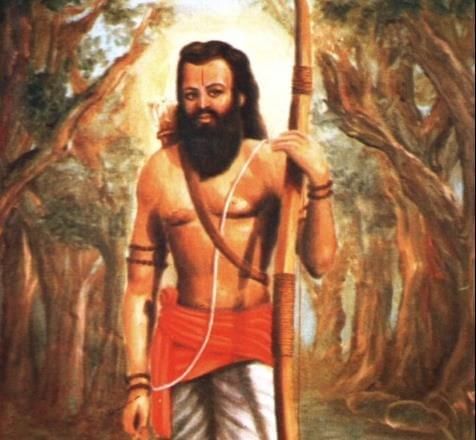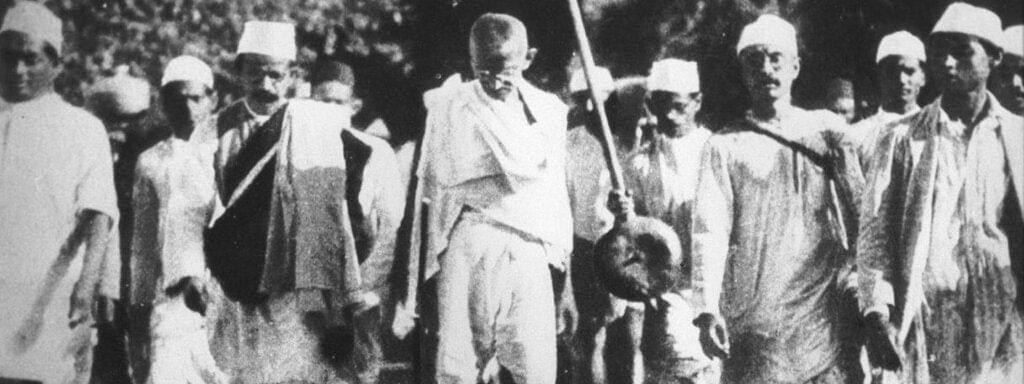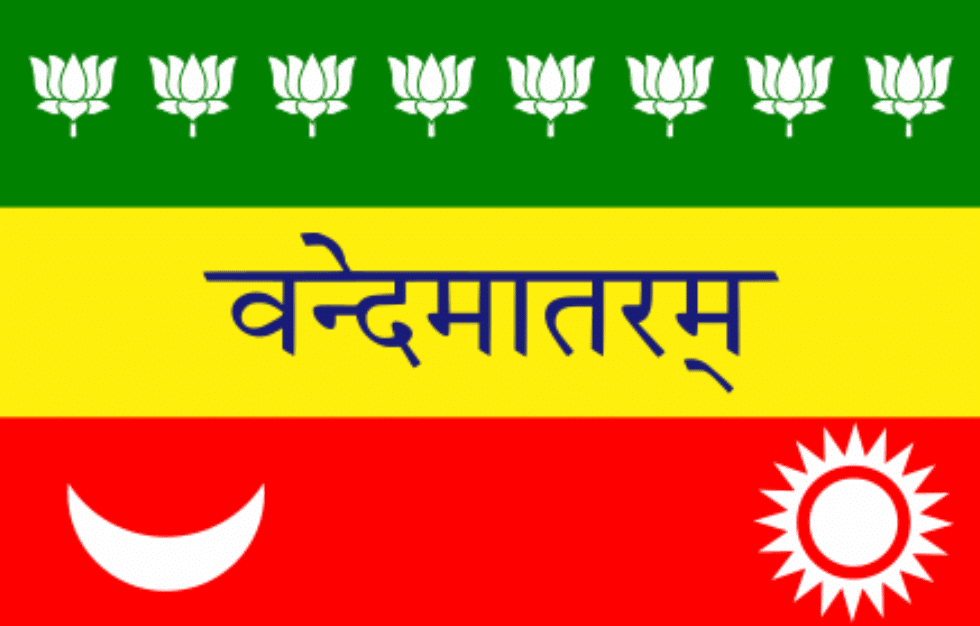Worksheet- Nationalism in India - 1 Class 10 Worksheet History Chapter 2
Q.1. Describe the role of Alluri Sitaram Raju in Andhra Pradesh during 1920s. Marks 3
Ans. Role of Alluri Sitaram Raju in the Gudem hills of Andhra Pradesh:
(i) Alluri Sitaram Raju claimed that he had a variety of special powers like making astrological predictions, healing people and surviving bullet shots.
(ii) The rebels proclaimed him as an incarnation of God.
(iii) Raju was inspired by Gandhi's Non-Cooperation Movement.
(iv) Persuaded people to wear khadi and give up drinking.
(v) But at the same time he asserted that India could be liberated only by the use of force, not non-violence.
(vi) Used guerrilla warfare for achieving swaraj. (To be assessed as whole)
Q.2. Why did Gandhiji decide to launch a nationwide ‘Satyagraha’ against the proposed Rowlatt Act (1919)? How was it opposed? Explain. Marks 5
Ans. Gandhi ji decided to launch a nation-wide Satyagraha:
(i) This Act had been hurriedly passed through the Imperial Legislative Council.
(ii) Indian members opposed the Act.
(iii) It gave the government enormous powers to repress political activities.
(iv) It allowed detention of political prisoners without trial for two years. (Any two points to be explained)It opposed in the following ways: (i) Rallies were organised in various cities.
(ii) Workers went on strike.
(iii) Shops were closed.
(iv) Communication, railway, telegraphs lines were disrupted. (Any other relevant point) (Any three)
Q.3. “British rule in India would have collapsed if Indians had not cooperated.” How did this statement help in starting a mass movement in India against the British rule?
Ans. (i) Mahatma Gandhi declared that British rule was established in India with the cooperation of Indian and if Indians had refused to cooperate, British rule in India would have collapsed within a year.
(ii) He proposed that the movement should unfold in stages.
(iii) It should begin with the surrendering of titles that the government had awarded to the Indians.
(iv) A boycott of civil services, army, police, courts and legislative assemblies, schools and foreign goods would show their non-cooperation to the British empire.
(v) Mahatma Gandhi felt that in case the government used repression, a full civil disobedience campaign would be launched. (Any three)
Q.4. Explain the effects of the First World War on India. Marks 5
OR
How did the ‘First World War’ create new economic and political situations in India? Explain with examples.
OR
Explain any five major problems posed by the First World War in India.
OR
Examine the effects of the First World War on the National Movement of India.
OR
Explain How the First World War helped in the growth of the National Movement in India. [NCERT]
Ans. (i) The war created a new economic and political situation.
(ii) It led to a huge increase in defence expenditure which was financed by war loans.
(iii) To fulfil the loan demands taxes were increased, custom duties were raised. Not only this, a new tax in the form of income tax was also introduced.
(iv) Prices increased, doubling between 1913 and 1918. This hit the common people.
(v) Villagers were asked to supply soldiers and through force recruitment in rural areas.
(vi) During 1918-19, crops failed in many parts of India which created a shortage of food.
(vii) Spread of influenza epidemic and death of 12 to 13 million people. (Any five)
Q.5. Define the term 'Civil Disobedience Movement'. Describe the participation of rich and poor peasant communities in the 'Civil Disobedience Movement'. Marks 5
Ans. Civil Disobedience Movement: To disobey the rules of the British Government.
Participation of rich and poor peasants:
(i) In the countryside, rich peasant communities like patidars of Gujarat and Jats of U.P. were active inmovement.
(ii) Rich peasants participated in the movement as a struggle against high revenue demand.
(iii) Rich peasants organized their community to support the Civil Disobedience Movement.
(iv) The poor peasants participated as they wanted their unpaid rent to be remitted. (Any other relevant point)
Detailed Answer: Definition of Civil Disobedience Movement: Civil Disobedience Movement refers to the act by a group of people by refusing to obey laws or pay taxes, as a peaceful way of expressing their disapproval of those laws or taxes and in order to persuade the government to change them. Gandhiji and Martin Luther King both conducted Civil Disobedience Movements in their respective countries to get rid of the exploitation and oppression offered by their colonial rulers.
(i) Rich Peasants: Depression and fall in prices affected them badly. They demanded reduction in land revenue. Swaraj meant reduction of taxes for them. They were disappointed when the movement was called off.
(ii) Poor Peasants: Depression affected them badly. They demanded reduction in rent. Swaraj meant reduction of rent for them. They joined Communist and revolutionary movements.
Q.6. Explain in brief the ‘Dandi March’. Marks 3
OR
Describe the main features of the ‘Salt March’.
Ans. (i) Mahatma Gandhi started his famous ‘Salt March’ or ‘Dandi March’ on 11th March, 1930 accompanied by 78 of his trusted volunteers.
(ii) The march was to cover 240 miles from Gandhi’s ashram in Sabarmati to the Gujarati Coastal town of Dandi.
(iii) On 6th April, 1930, he reached Dandi and ceremonially violated the law by manufacturing salt by boiling sea water.
(iv) This marked the beginning of the Civil Disobedience Movement. (Any three)
Correct the following statement and rewrite:
Q.7. The import of foreign cloth doubled between 1921 and 1922, its value increasing from ₹ 102 Crore to ₹ 200 Crore.
Ans. The import of foreign cloth halved between 1921 and 1922, its value dropping from ₹102 Crore to ₹57 Crore.
Q.8. In 1928, the Hindustan Socialist Republician Army (HSRA) was founded at a meeting in Ferozeshah Kotla ground in Kolkata.
Ans. In 1928, the Hindustan Socialist Republician Army (HSRA) was founded at a meeting in Ferozeshah Kotla ground in Delhi.
Find the incorrect option:
Q.9. (a) In 1928, Vallabhbhai Patel led the peasant movement in Bardoli, a taluka in Gujarat.
(b) It was against enhancement of land revenue, known as the Civil Disobedience Movement.
(c) This movement was a success under the able leadership of Vallabhbhai Patel.
(d) The struggle was widely publicized and generated immense sympathy in many parts of India.
Ans. The Incorrect option is (b): It was against enhancement of land revenue, known as the Civil Disobedience Movement.
Correct answer is: It was against enhancement of land revenue, known as Bardoli Satyagraha.
Q.10. What type of flag was designed during the ‘Swadeshi Movement’ in Bengal? Explain its main features. Marks 3
Ans. During the “Swadeshi Movement” in Bengal the flag was designed as a Tricolour Flag.
The two features of the flag were:
(i) The colour of the flag was Red, Green and Yellow.
(ii) It had eight lotuses representing eight provinces in British India.
(iii) It had a crescent moon representing Hindus and Muslims. (Any two)
Q.11. Explain any five factors which gave rise to the Civil Disobedience Movement of 1930. Marks 5
Ans. Factors that gave rise to the Civil Disobedience Movement were:
(i) The problem with the Simon Commission.
(ii) Irwin’s vague offer of dominion status for India in an unspecified future.
(iii) Salt Law (iv) Negligence of eleven demands of Gandhiji by the British.
(v) Lahore Session of INC (1929)
Q.12. Explain the attitude of the Indian merchants and the industrialists towards the ‘Civil Disobedience Movement’. Marks 5
Ans. The attitude of the Indian merchants and the industrialists towards the Civil Disobedience Movement:
(i) During the First World War, Indian merchants and industrialists had made huge profits and became powerful.
(ii) They wanted protection against imports of foreign goods and a Rupee-Sterling Foreign Exchange ratio that would discourage import.
(iii) To organise business interest they formed the Indian Industrial and Commercial Congress (in 1920) and the Federation of Indian Chamber of Commerce and Industries—FICCI ( in 1927).
(iv) They gave financial assistance and refused to buy or sell imported goods.
(v) Most businessmen came to see ‘Swaraj’ as a time when colonial restrictions on business would no longer exist and trade and industry would flourish without constraints.(vi) After the failure of the Round Table Conference business groups were no longer uniformly enthusiastic.
(vii) They were apprehensive of the spread of militant activities and worried about prolonged disruption of business. (Any five)
Q.13. How did the Civil Disobedience Movement come into force in various parts of the country? Explain with examples. Marks 5
Ans. The Civil Disobedience Movement came into force in various parts of the country :
(i) Gandhi led the Salt March from Sabarmati Ashram to Dandi with his followers starting the Civil Disobedience Movement.
(ii) Thousands in different parts of the country broke the Salt Law, manufactured salt and demonstrated in front of government salt factories.
(iii) In the countryside like the rich Patidars of Gujarat and Jats of Uttar Pradesh were active in the movement.
(iv) As rich peasant communities were very hard hit by the trade depression and falling prices, they became enthusiastic supporters of the Civil Disobedience Movement.
(v) As the depression continued and the cash invoice dwindled, the small tenants found it difficult to pay the rent. They wanted the unpaid rent to the landlords to be remitted and thus they joined the movement.
(vi) Merchants and industrialists supported the movement by giving financial assistance and refused to buy and sell the imported goods.
(vii) The industrial working class of Nagpur region participated in the Civil Disobedience Movement (CDM).
(viii) Railway workers, dock workers, coal mine workers of Chhota Nagpur, etc. participated in protest rallies and boycott campaigns.
(ix) Women also participated in large numbers. (Any five)
Q.14. Read the sources given below and answer the questions that follows:
SOURCE A : Towards Civil Disobedience [NCERT History Ch. 2 Page 38] In February 1922, Mahatma Gandhi decided to withdraw the Non-Cooperation Movement. He felt the movement was turning violent in many places and satyagrahis needed to be properly trained before they would be ready for mass struggles. Within the Congress, some leaders were by now tired of mass struggles and wanted to participate in elections to the provincial councils that had been set up by the Government of India Act of 1919. They felt that it was important to oppose British policies within the councils, argue for reform and also demonstrate that these councils were not truly democratic. C. R. Das and Motilal Nehru formed the Swaraj Party within the Congress to argue for a return to council politics. But younger leaders like Jawaharlal Nehru and Subhas Chandra Bose pressed for more radical mass agitation and for full independence.
SOURCE B : The Independence Day Pledge, 26 January, 1930 [NCERT History Ch. 2 Page 39] ‘We believe that it is the inalienable right of the Indian people, as of any other people, to have freedom and to enjoy the fruits of their toil and have the necessities of life, so that they may have full opportunities of growth. We believe also that if any government deprives a people of these rights and oppresses them, the people have a further right to alter it or to abolish it. The British Government in India has not only deprived the Indian people of their freedom but has based itself on the exploitation of the masses, and has ruined India economically, politically, culturally, and spiritually. We believe, therefore, that India must sever the British connection and attain Purna Swaraj or Complete Independence.’
SOURCE C : The Salt March and the Civil Disobedience Movement [NCERT History Ch. 2 Page 39] Mahatma Gandhi found in salt a powerful symbol that could unite the nation. On 31 January 1930, he sent a letter to Viceroy Irwin starting eleven demands. Some of these were of general interest; others were specific demands of different classes, from industrialists to peasants. The idea was to make the demands wide-ranging, so that all classes within Indian society could identify with them and everyone could be brought together in a united campaign. The most stirring of all was the demand to abolish the salt tax. Salt was something consumed by the rich and the poor alike, and it was one of the most essential items of food. The tax on salt and the government monopoly over its production, Mahatma Gandhi declared, revealed the most oppressive face of British rule. Marks 3
Question : SOURCE A : Towards Civil Disobedience
(i) What was the major reason behind the formation of the Swaraj Party?
SOURCE B : The Independence Day Pledge, 26 January, 1930
(ii) What was the negative impact of the British rule in India?
SOURCE C : The Salt March and the Civil Disobedience Movement
(iii) In Mahatma Gandhi's opinion, what revealed the true oppressive face of the British government?
Ans. (i) C. R. Das and Motilal Nehru formed the Swaraj Party within the Congress to argue for a return to council politics.
(ii) Negative impact of the British rule in India: The British Government in India had not only deprived the Indian people of their freedom but had also based itself on the exploitation of the masses, and had ruined India economically, politically, culturally, and spiritually.
(iii) Salt was something consumed by the rich and the poor alike, and it was one of the most essential items of food. The tax on salt and the government monopoly over its production, Mahatma Gandhi declared, revealed the most oppressive face of British rule.
Q.15. Why was the ‘Salt March’ considered an effective symbol of resistance against colonialism? Explain. Marks 5
Ans. Salt March:
(i) Salt was consumed by all the sections of the society.
(ii) It was the most essential item of food.
(iii) The tax on salt and the government monopoly over production.
(iv) Gandhiji found salt as a powerful symbol that could unite the nation.
(v) On 31st January 1930, he sent a letter to Viceroy Irwin starting eleven demands.
(vi) The idea was to make the demands wide ranging, so that all classes within Indian society could identify with them and everyone could be brought together in a united campaign.
(vii) The most stirring of all was the demand to abolish the salt tax. (Any five)
|
94 videos|630 docs|79 tests
|
FAQs on Worksheet- Nationalism in India - 1 Class 10 Worksheet History Chapter 2
| 1. What is nationalism in India? |  |
| 2. Who were the key leaders of the Indian nationalist movement? |  |
| 3. What were the main objectives of the Indian nationalist movement? |  |
| 4. How did the Indian nationalist movement challenge British rule? |  |
| 5. What were the major achievements of the Indian nationalist movement? |  |

















